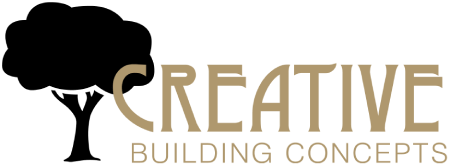When I think about any room in a home, I first think about what the space will be used for – Will our homeowners be hosting fancy dinner parties? Relaxing in front of the TV for the big game or a movie night? Meal prepping, sleeping, working from laptops, working out? Functionality is SO important when considering the flow and structural design of a space, but one thing that I like to ask early on in the design process is – “how do you want your new space to make you feel?”
There are so many contributing factors to emotions, our feelings. Many of those are relationship-driven, but our environment can impact how we feel – often subconsciously. The color of our walls can calm, energize, or inspire. The textures in our space can create sensations of coziness, discomfort, or soothing. A large, cavernous space can make us feel free or alone, while smaller spaces can make us feel safe or uncomfortable. The echoes of hard surfaces can amplify small sounds while soft textiles can absorb them. Everything around us stimulates us somehow, and in turn, affects our demeanor, our thoughts, and even our pulse.
When I start working with our clients, I want them to consider what feelings and emotions they want that space to evoke. How do they want to feel when they return home? How do they want their guests to feel when they are in this space? Should they feel welcome and relaxed? Or maybe excited, hungry, and invigorated?
Homeowner’s Priorities
I constantly pull myself in every direction when approaching each renovation. The homeowner’s priority dictates the direction I move. My chain of questions typically starts with: What is most important to you when transforming your home? If increased functionality and neutrality for re-sale is most important, I know that we need to be safe with our choices, while still improving the function as well as the general aesthetic of the space.
1. Looking at Main Objectives
If our clients’ main objective is to make the space “theirs” and put their personal style and spin on it, I know that I can really dig into learning about our clients’ personalities.
I will ask questions like, “Where is your favorite place on Earth? When and where do you feel the most comfortable/calm/inspired/invigorated/motivated? What are your absolute favorite things? What color makes you feel the way you want to feel when you are in this new space?” Lifestyle is also a huge factor, and a home with three young children and 2 dogs will have different priorities than empty nesters.
I like to approach our homeowners with an idea board based on the tidbits of information I collect early on in the process. I feel that I am able to better gauge and understand their preferences by showing them several options and asking them to quickly pick or eliminate certain elements and styles. I have found that often when clients claim that they don’t know what they want, they really mean that the overall design task is daunting and intimidating, and they don’t know where to start.
1. Your Unique Style
It is surprising how consistent homeowners actually are when put on the spot – every person has their own unique taste. They may not be able to verbalize their preferences, but by providing a process of elimination, I can often tell that they gravitate towards sharp, clean lines, or that they prefer a softer, curved shape. They might prefer cooler tones or warmer ones, have an aversion to beige or be drawn to bright colors.
The data I collect from my initial barrage of images and questions draw half of the picture for me. Once I go over the general feel and style, I discuss fixture color/families, and I’m off to the races.
3. Where We Start
Cabinetry is generally the first stop. The style of cabinet doors, organization options, and color are important as a jumping-off point for me.
From there, I like to meet with our clients at our local countertop and stone design center, where we walk through aisles of incredible slabs – natural stone as well as quartz. The cabinetry and countertop selections guide me to the appropriate sink finishes, backsplash options, and flooring I ultimately recommend.
Plumbing fixtures are the next on the list, and the finish color and overall style (modern vs. traditional for example) are great ways to narrow down these selections.
4. Finishing Touches
Lighting and hardware are the icings on the cake, and any special features act like pretty and delicious toppings. Features like wallpaper, wooden or other structural features, stone fireplace surrounds, shiplap or other wall embellishments are things I see often, but not typically all of them within one project.
Paint colors are plentiful and can be matched or coordinated very easily, which is why paint color is one of the last items I typically select with our clients.
Once all of these items are selected, I invite our clients to keep communications open as our incredible field team takes the reins. There is always time and opportunity for the design to evolve, though we try to think through every detail earlier in the process. Ultimately, we want our clients to be as satisfied with their new space as possible.
5. Timeline
The design process can be quick (4-6 weeks) or much longer (4-6 months). There are several factors when considering this. One is the scope of the job. If you’re looking to just work on one area of your home, such as your Master Bathroom, or the kitchen, it can go pretty quickly. If you are completely redesigning your entire home, that is a very different story.
Giving thought before starting your project, keeping ideas handy, and having a clear vision is always helpful. Sometimes, I come across a client who claims they have no idea what they want, but one look at their Pinterest board can give me several clues as to what their style preferences are, by finding common themes. There certainly is a danger with looking at TOO many ideas, you might become confused or try to fit too many looks or styles into your space.
Another factor in the design-build process is the Covid effect. Long after the factory shutdowns, we are still seeing extended lead times, backorders, and even cancellations of certain styles/products. This sometimes forces us to re-select design elements because they are simply no longer available when it comes time to purchase them. A shorter lead time may be more desirable, or, in some cases, we have also purchased lesser expensive “placeholders” so that the space can still function (a light fixture that does the job, or a less style-cohesive faucet that still allows us to wash our hands).
Our Mission
One thing that sets CBC apart is that we have a design team that gets involved from the start. From the first moment our architectural designer steps foot onto the job, we are working together to understand and provide the smoothest transition from shaping your space to styling it. We take pride in our teamwork and are able to make sure we are hitting the mark for our homeowners. We take each job personally, because each job is different, with different inhabitants. We build a foundation of trust and continue to build on our relationships with them because we want to deliver the best transformations possible.
No project is without a hiccup or change of plans along the way, but we are on the ride with our clients. I can honestly say that I am fully committed to and invested in the final project. I always want our clients to say that their new space is beyond what they ever imagined and that they feel joy and relaxation here, thanks to us. When we achieve that, the state of a complete and harmonious whole, for our clients, is

